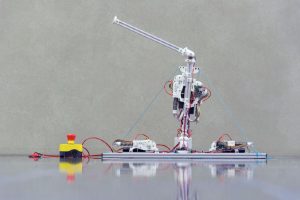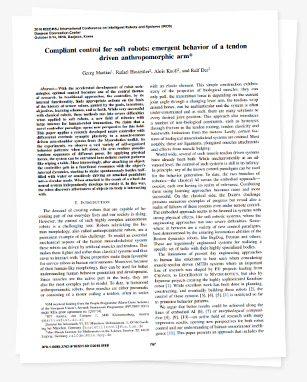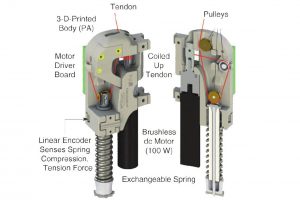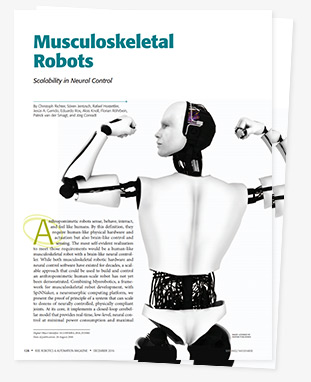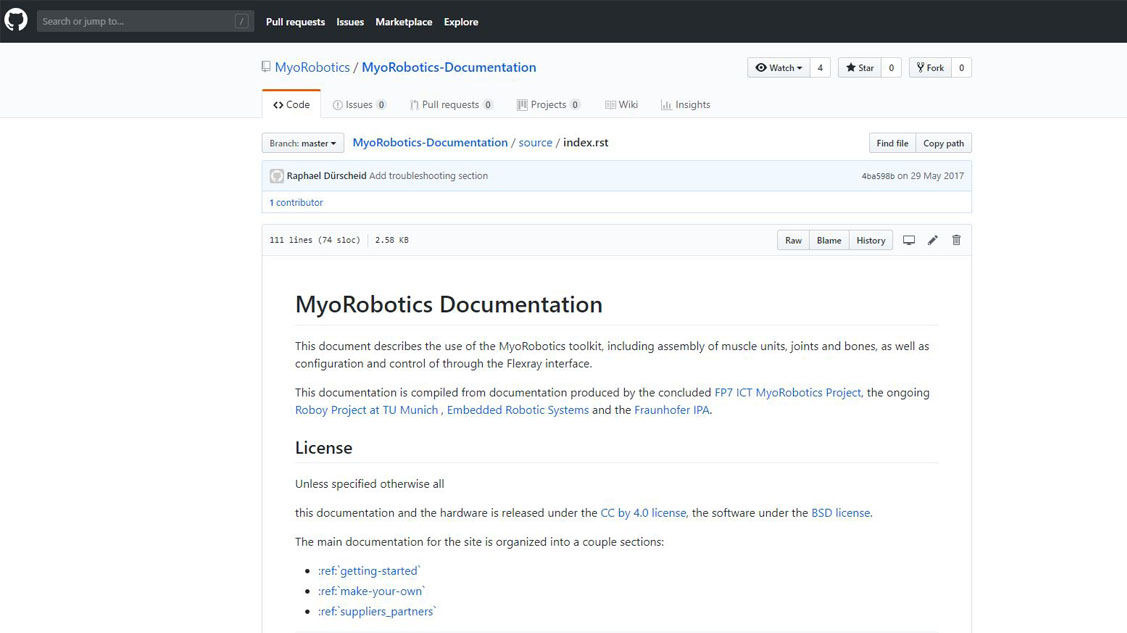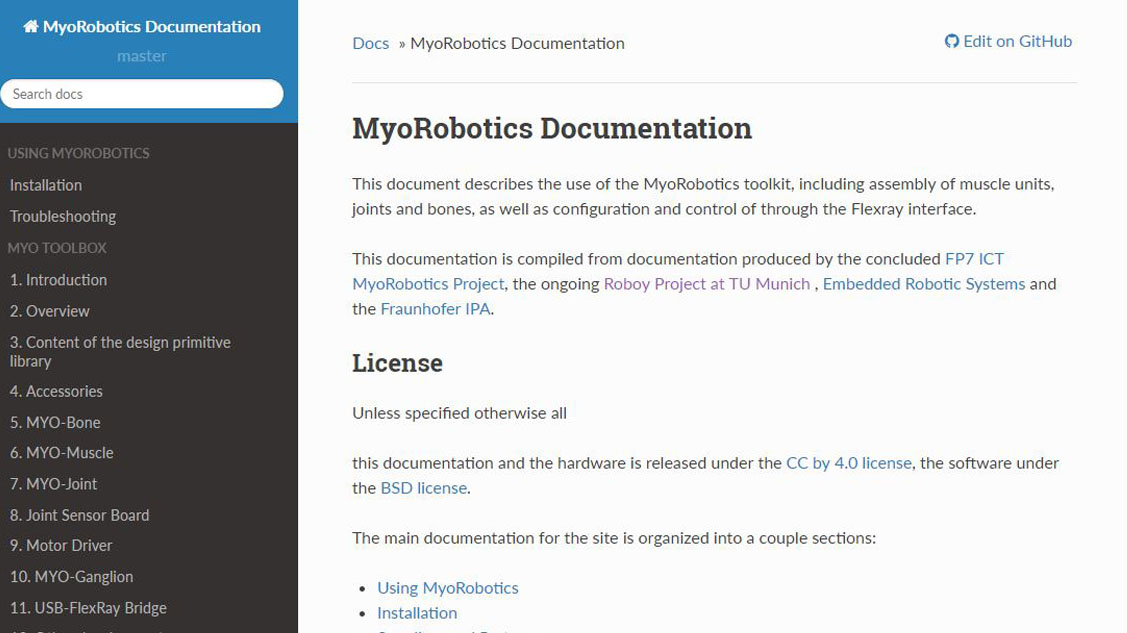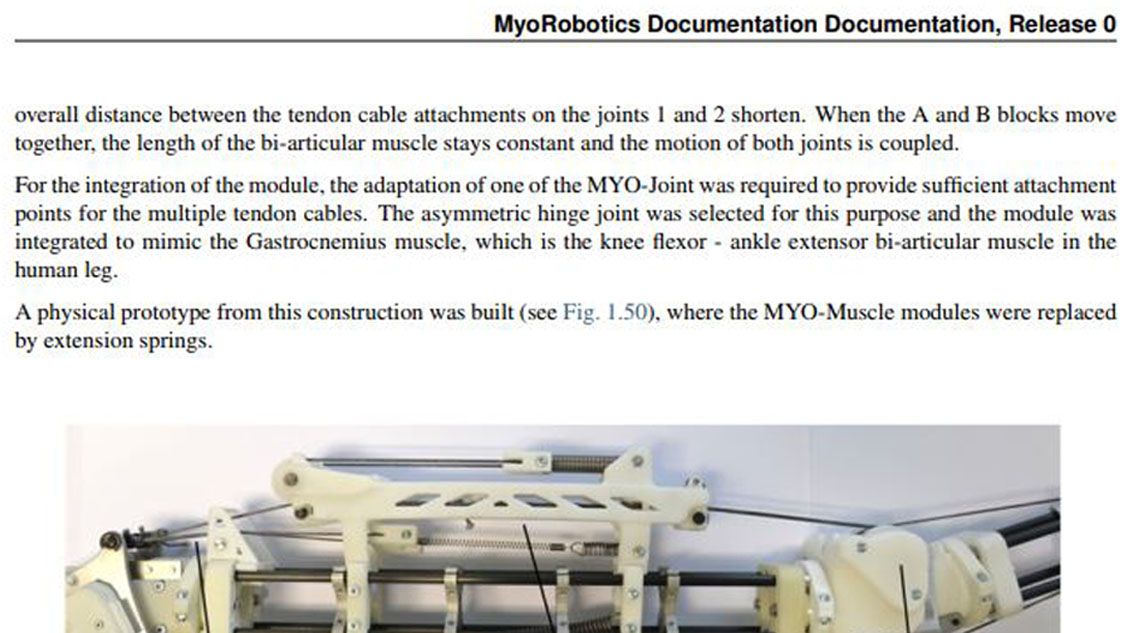MYOROBOTICS
ARM
let’s handshake
WHY MUSCULOSKELETAL ROBOTICS?
scalability in neural control
Compliant, musculoskeletal robotic systems offer several advantages, especially in situations where human and robot work in close proximity. A musculoskeletal design makes extensive use of viscous-elastic materials to emulate the muscles and tendons which enhance safety, dexterity and adaptivity in uncertain environments. It also allows reducing body weight and developmental cost, while at the same time increasing design flexibility.
myorobotics toolkit
a toolkit that fits it’s user needs
Myorobotics toolkit is a modular and reconfigurable system for developing musculoskeletal robotic platforms. It allows researchers to confi gure hardware setups tailored to the needs and requirements of individual experiments. The toolkit consists of design primitives that mimic the functions of their biological equivalents and can be con figured into custom-made robots. The key hardware components are: bones, muscles, joints (with integrated perceptors), and ganglions.


